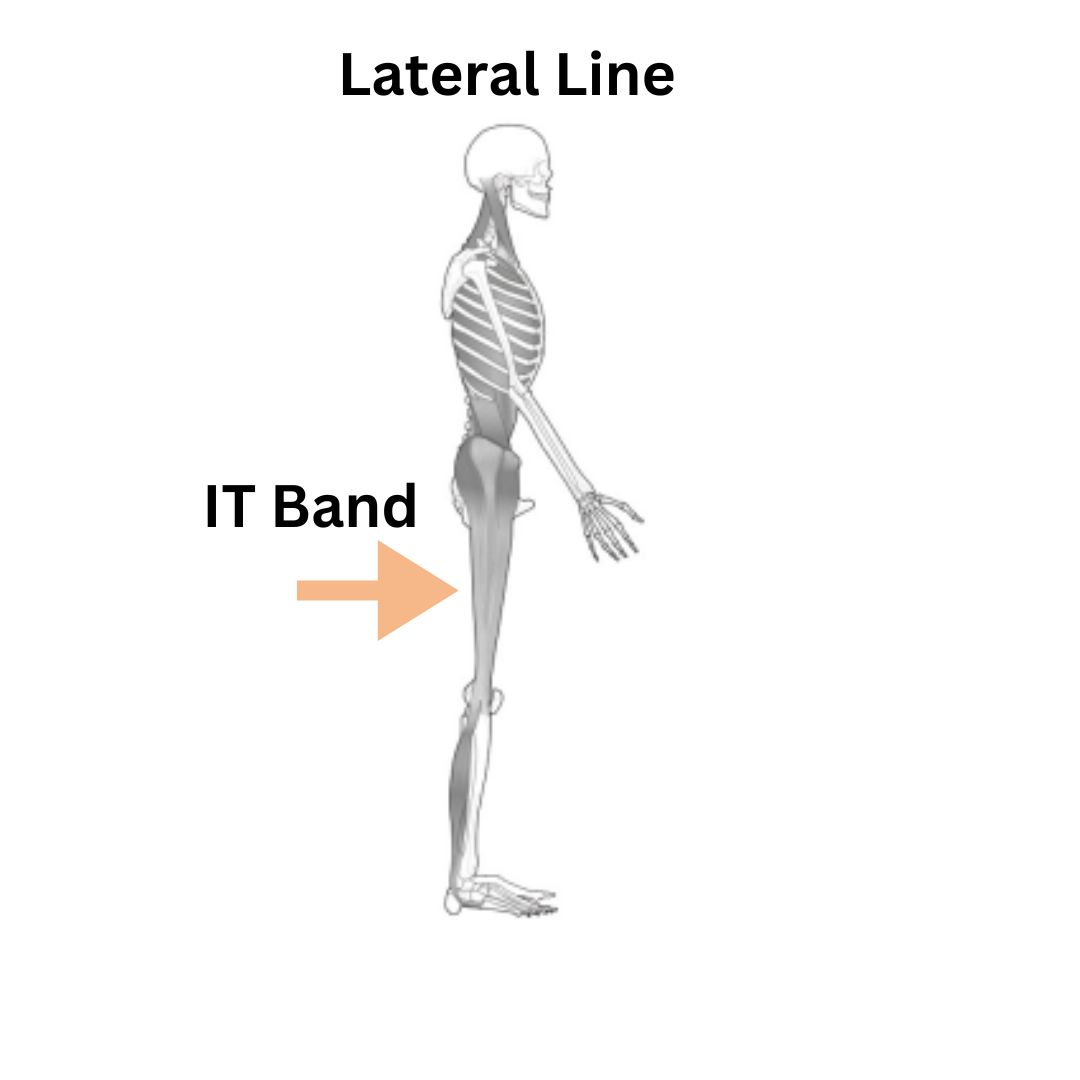When you eat or drink something that your bladder is sensitive to, it can cause…

It’s All Connected part 3: Your Lateral Line and the Pelvic Floor.
Many of the patients that pelvic floor physical therapists see for leaking or weakness have pain or
tenderness on the outside of their hips and down the iliotibial or IT band. While this may seem to be
two different issues, most likely, they are two parts of the same problem.
The iliotibial band is part of the lateral line of fascia. This fascial plane runs from the base of the big toe
to the outside of the calf, thigh, buttock, into the abdominal obliques, the lateral ribs to the scalene
muscles of the neck. The lateral line plays an important role in preventing us from tipping over when we
are standing on one leg.
With movement, the lateral line gives us the ability to apply the brakes and slow down, especially with any rotation. This is important with mundane activities like bending over to empty the dishwasher or higher-level activities like running and jumping.

The IT band really starts just below the knee and runs up the side of the thigh and over the greater trochanter which is the hip bone you can feel on the outside of your hip. The IT band widens as it goes over the greater trochanter and creates a fascial cup. With it’s connections to the gluteal muscles and the quadriceps, the tension created keeps the hip in socket.
The IT band then attaches into the tensor fascia latae muscle and gluteus medius and maximus muscles. These muscles then attach along the brim of the entire pelvis with connection into the abdominal obliques. Coordination through this system is important for hip joint health.
If there is tightness in the IT band, it is a sign that there is most likely tightness in the gluteal muscles or oblique systems. Since we know that the lateral line helps to keep the hip in socket, if there is a disruption in this line, something else must work to help give us stability. This is often the pelvic floor. When we go for a run and the pelvic floor is already tight from compensating to stabilize our hip, it cannot give our bladder neck the support it needs. This leads to urine leakage with activity.
Pelvic floor physical therapists are experts at looking at this entire system. If you are leaking, Kegels may
not be the answer. Many times, it is not pelvic floor weakness that is causing the leaks. We need to look at
the whole system and determine if there is dysfunction along the kinetic chain that is contributing to the issue. Click HERE to schedule an appointment with one of our specialists in pelvic floor physical therapy!




